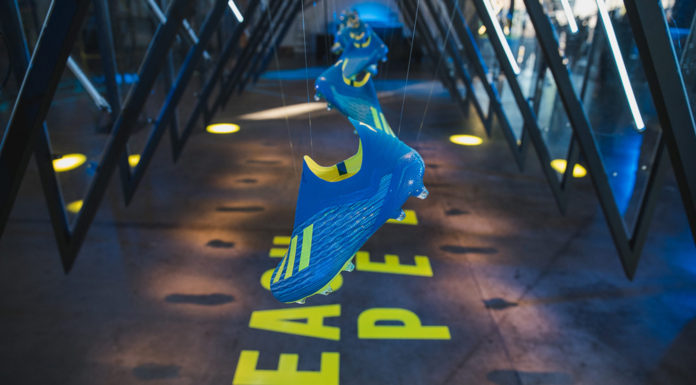In addition to the shirt’s actual design, brand logos play a massive role in how we perceive football kits. From the first logo to modern embellishments, we trace the history of how brand logos have been placed on uniforms.
Whether by collectors or diehard fans, the discussions around sports jerseys have become more frequent and impassioned. Jerseys have evolved from simply on-pitch wear to both mass marketing vehicles and emotionally valuable pieces of clothing alike.
In football, kits are remembered for their aesthetics and the memories made in them. And while the former elicits images of some iconic designs, the actual brand logos also play a major role in the final look of the kit. Wordmarks and clever uses of brand imagery have contributed to many of the most memorable jerseys in the sport’s history.
We take a trip down memory lane on how some of the globally known sportswear manufacturers’ brand logos on kits have evolved over the years.
The first eight editions of the FIFA World Cup never saw any team wear a kit with a manufacturer’s logo on it. From the 1930s to the late ’60s, most of the kits produced had just the national football association logo on it, and nothing else.
Things changed at the 1974 FIFA World Cup, when sportswear manufacturers started introducing their logos onto kits, a move largely fueled by the adidas–PUMA rivalry. Every entity wanted to differentiate its product and stand out amongst the crowd. We’ll use this landmark year as the starting point of our discussion.
1974
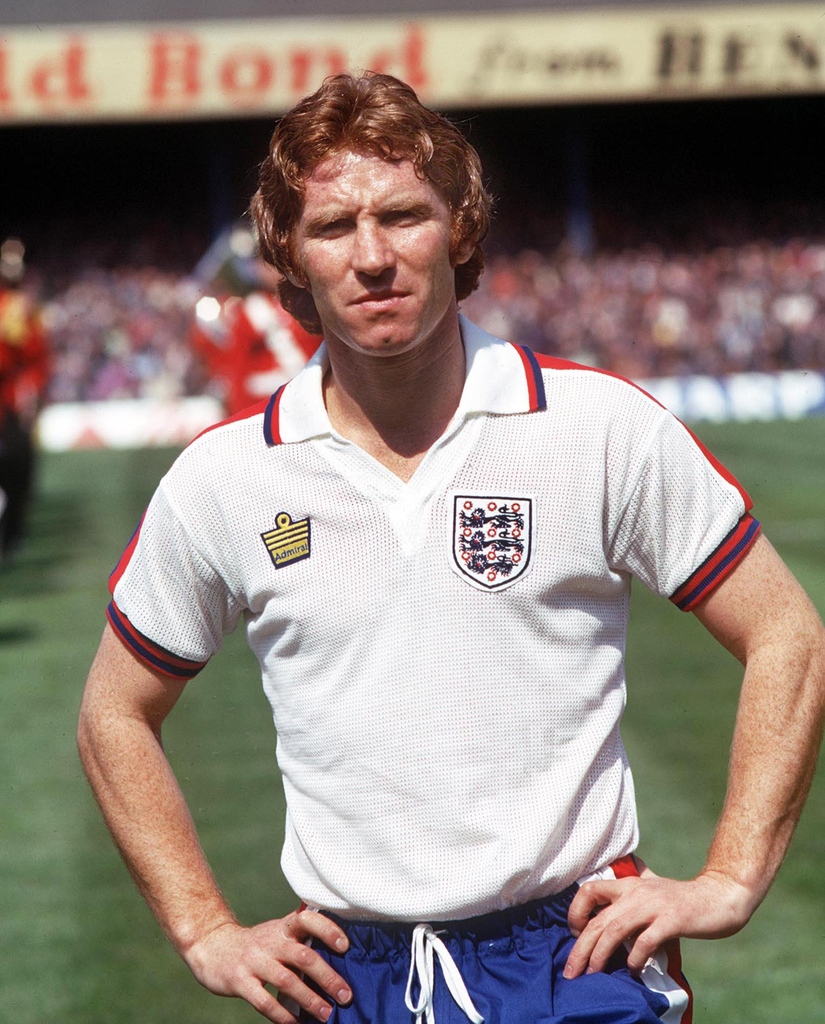
Largely seen as the year things changed for football kits, there were plenty of innovations made in the 1974 football season. First, Admiral and Leeds United partnered together to have the first visibly branded kit in the English First Division. The brand would also team up with the English FA to create the first branded England kit ahead of the 1974 World Cup.
Not to be outdone, adidas also made a strong showing in the tournament by kitting out 12 of the 16 participating nations. The kits produced by adidas at this World Cup came with a recognizable feature of the Three Stripes on the sleeves running from the shoulders to the elbow. Some countries’ kits didn’t have the shoulder three lines, but a trefoil logo instead.
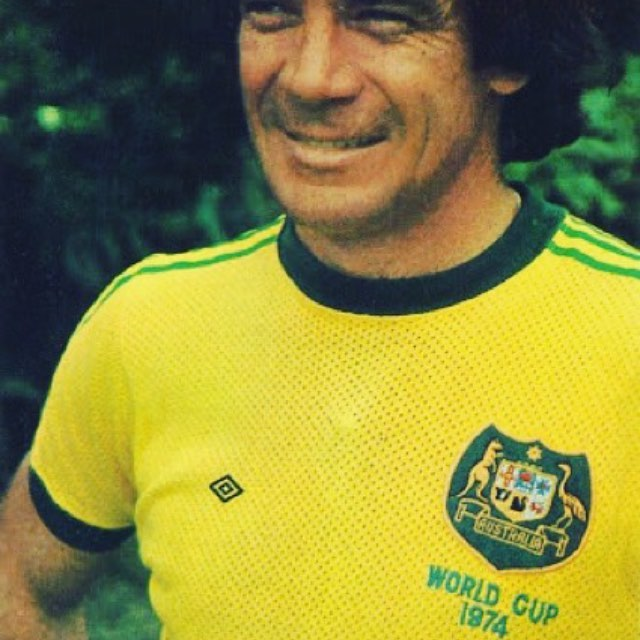
The most interesting kit used by a country in this tournament was worn by Australia, whose strip was dual-branded. It featured the Three Stripes of adidas on the shoulders along with the Umbro diamond on the chest. The two brands used to be partners, where each would promote the other’s products in the market it operated in.
Umbro, who was primarily into the production of kits and not football boots, was the sole distributor of adidas boots in the UK market, while adidas, who were primarily into the production of football boots, marketed and distributed Umbro kits in Germany.
1975
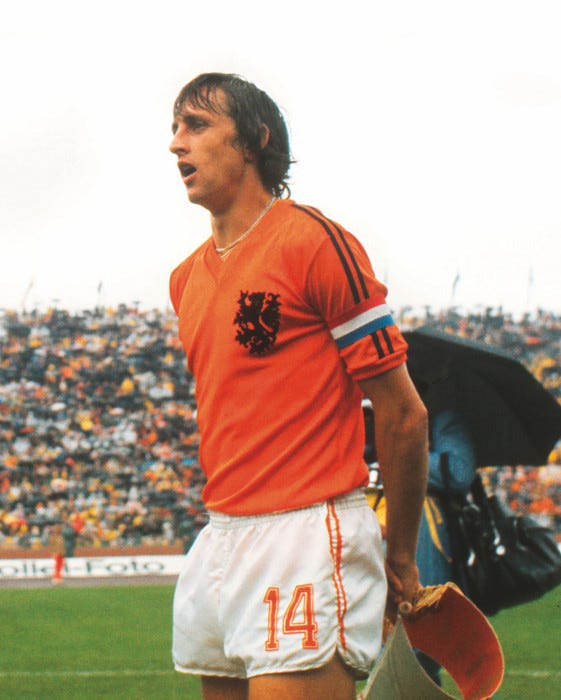
PUMA didn’t produce any kit for the countries that competed at the 1974 World Cup, however, the brand received a fair share of the limelight because the best player in the world at that time and PUMA athlete, Johan Cruyff, refused to wear the adidas-branded Netherlands’ kit.
In 1975, PUMA also moved into the kit production market by supplying hometown club Borussia Monchengladbach.
After testing the waters with the brand logos, adidas started incorporating the Three Stripes into the kits of several German clubs. In the upcoming years, English football clubs like Crystal Palace, Ipswich Town, and Queens Park Rangers would all be sporting adidas logos on their kits as well.
1978
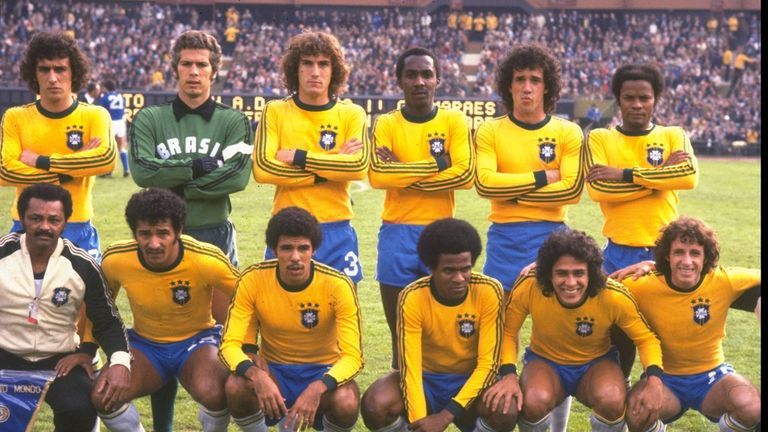
Argentina were the host of the FIFA World Cup in 1978, and adidas was the outfitter for the majority of participating teams. The Three-Striped sleeves featured on most of the kits, but adidas also introduced a new feature that branded the shorts with the iconic lines as well. For the first and only time, Brazil wore an adidas kit at the 1978 World Cup.
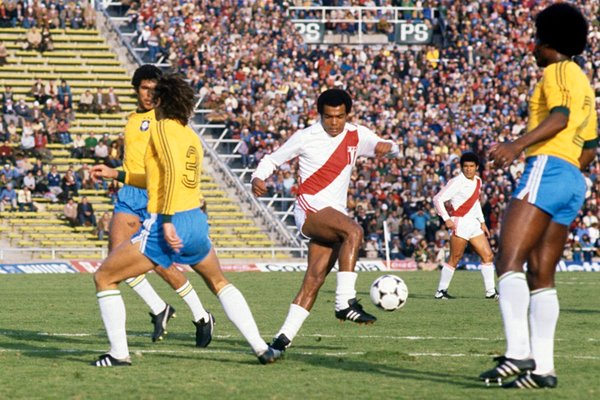
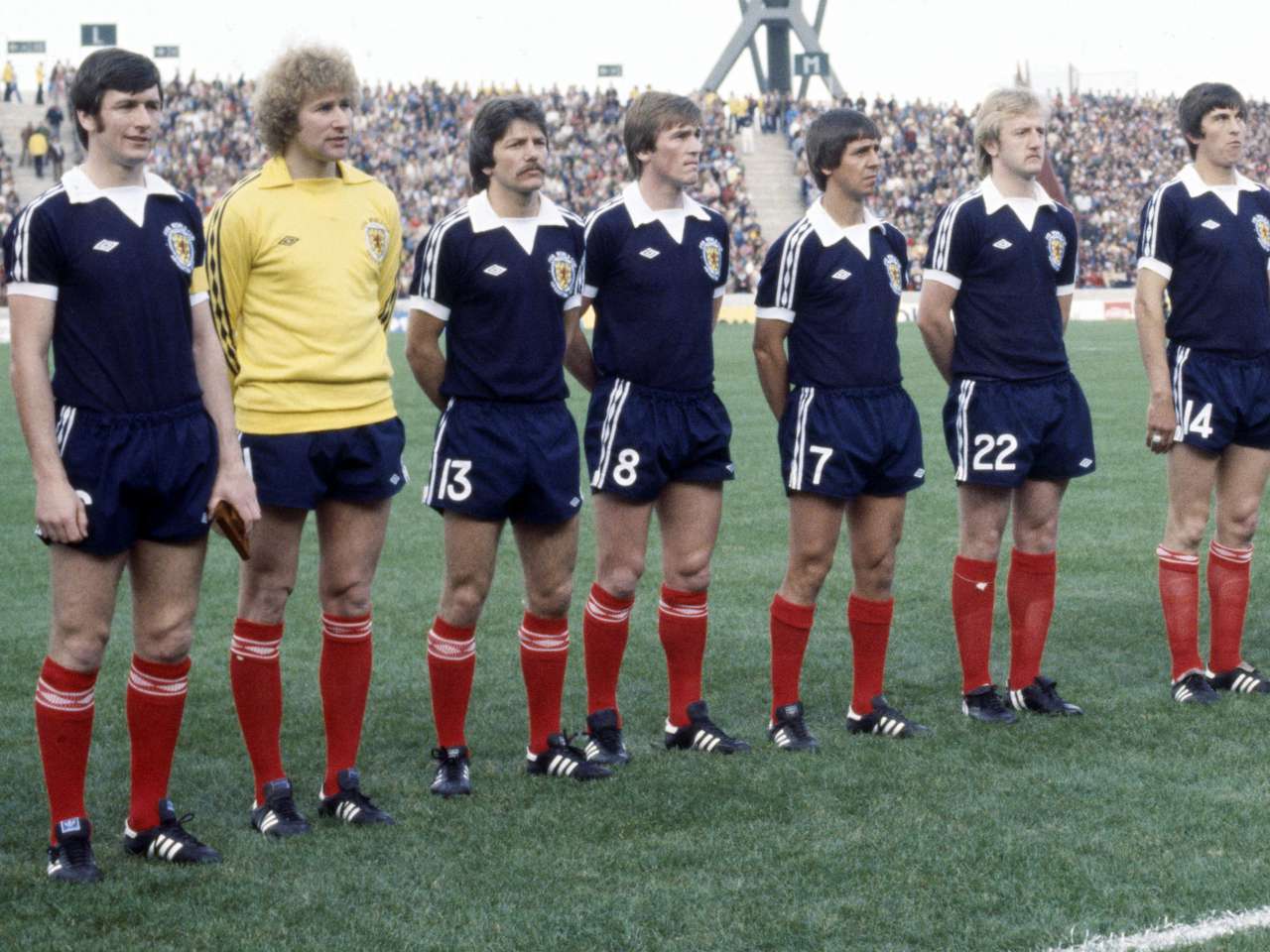
Umbro and adidas went their separate ways, as both brands diversified into the markets they weren’t initially operating in. Umbro produced Scotland’s kits, which were in the exact structural design as adidas’ kits, where the brand’s diamond logo flowed from the sleeves and the sides of the shorts.
PUMA made its World Cup debut with the Austrian national team. A major surprise at the World Cup was the fact that Germany switched manufacturers by moving from adidas to another German brand, Erima.
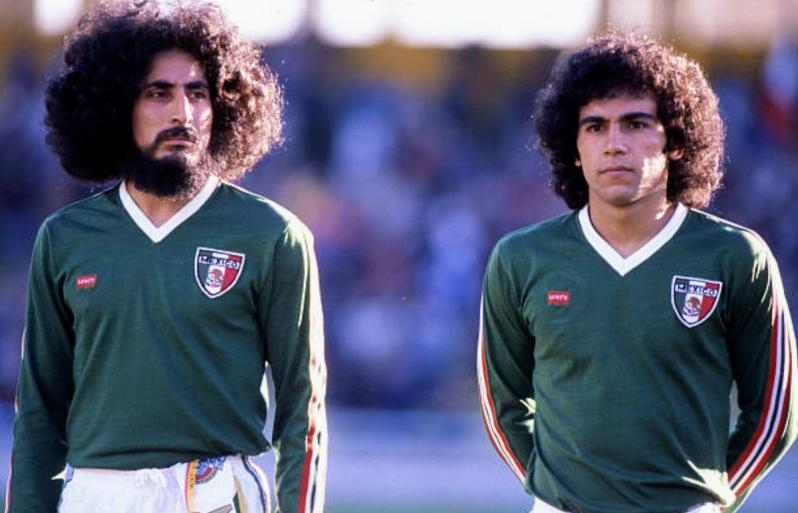
But the most surprising brand that made the trip to Argentina that year was Levi Strauss and Co. Yes, the one that makes jeans. The American outfit supplied Mexico’s kits at the tournament, and it hasn’t made another foray into sportswear since.
1982
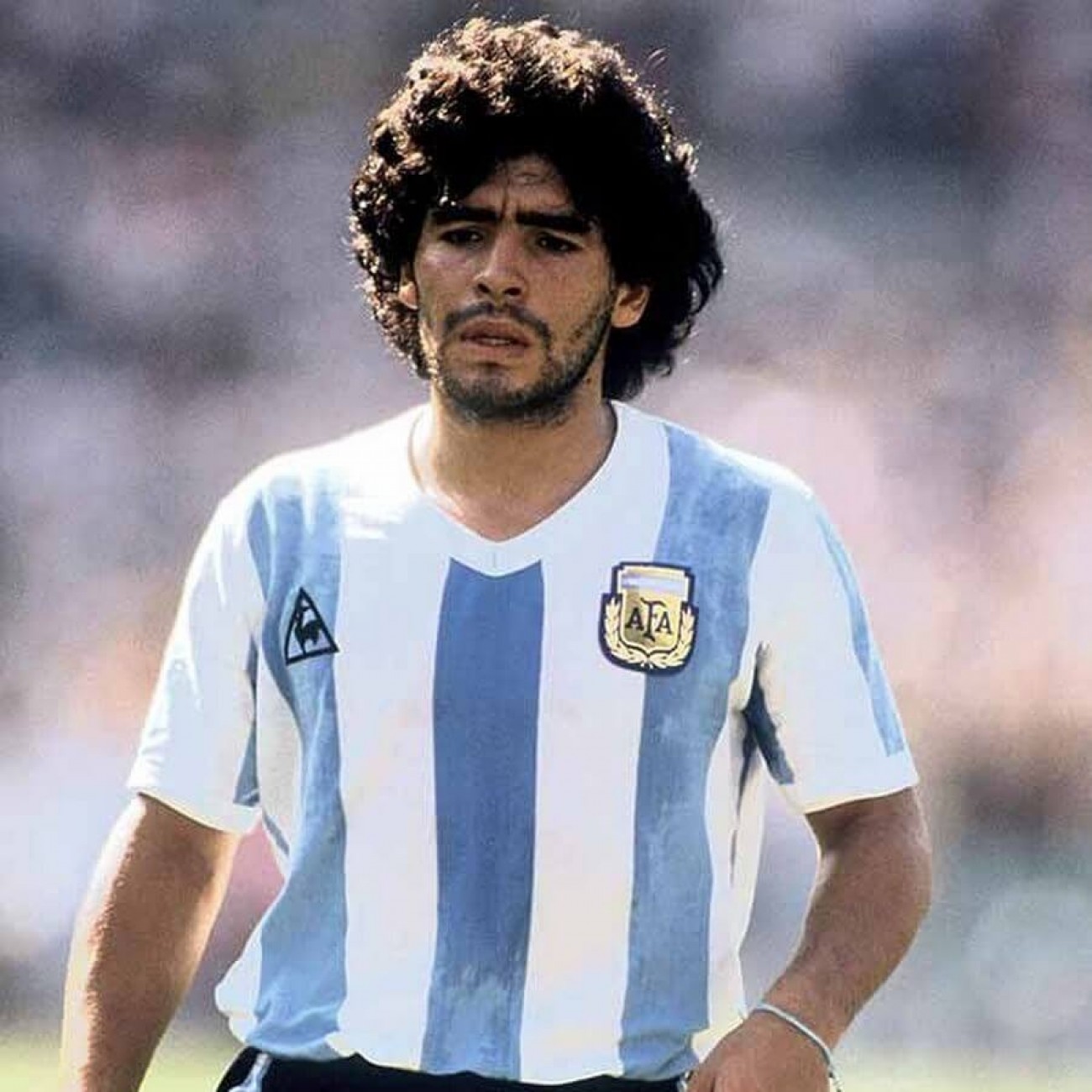
French and English brands Le Coq Sportif and Admiral had a bite of the kits exhibited at the World Cup, but it was adidas again who dominated the field. Le Coq Sportif interestingly took Argentina from adidas’ books and produced for debutants Cameroon. Admiral on the other hand also took Belgium from the Three Stripes and produced the tramline design fashioned with Belgium’s colors.
1983
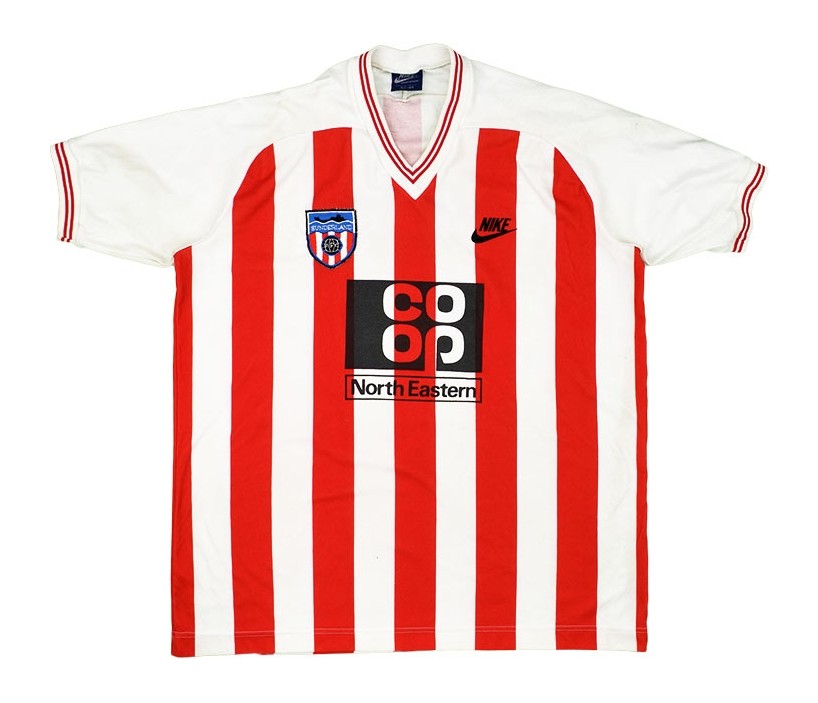
Nike entered the fray in 1983 by kitting out English side Sunderland. The brand mostly known for running sneakers wanted to expand into other sports, and would soon become a major, if not the major, player across basketball and football.
1984
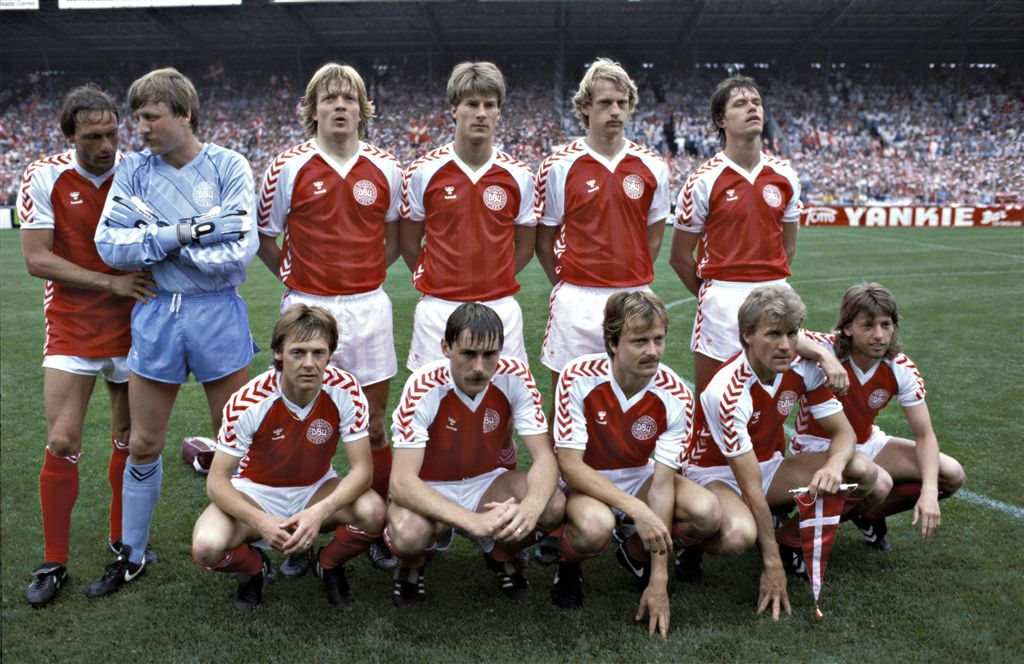
Danish brand Hummel began to supply its own national team in 1984, a fact that remains true today. The most striking feature of Hummel’s inaugural Denmark kit is the brand’s chevron logo being fully clad on the shoulders to the sleeves and on the side of the shorts.
1988
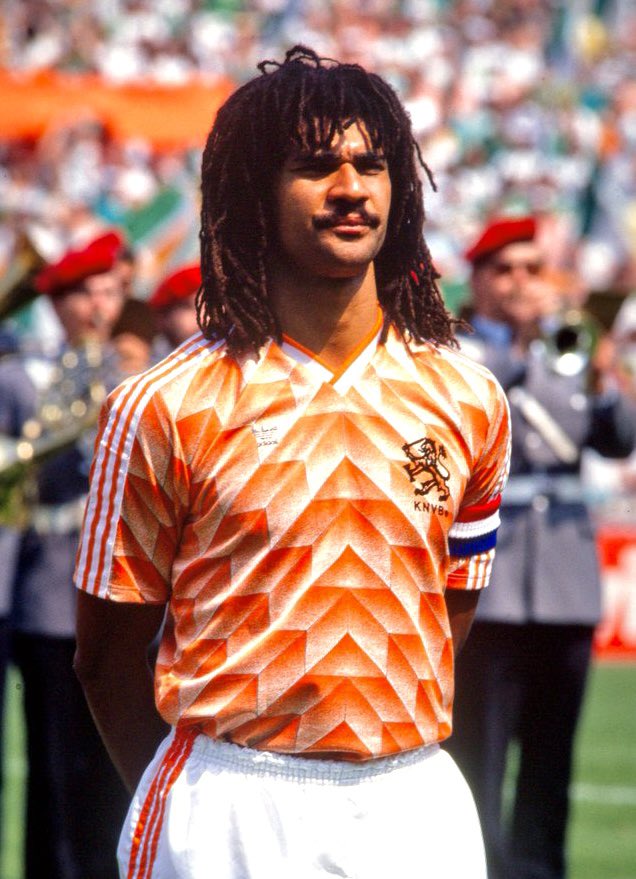
Up to this point, the primary embellishment of an adidas shirt was the signature Three Stripes. However, the brand devised more captivating designs in addition to the stripes near the end of the decade.
In 1988, the Netherlands received their iconic EURO-winning shirt, while West Germany acquired a teal-colored design for their away strip. The Soviet Union and East Germany were both provided with similar shirts, whereas the West Germany home shirt became another timeless classic, featuring the German flag in an iconic design on the front. Subsequently, more unconventional shirt designs emerged, including the incorporation of small stripes along the sleeves, as seen in Arsenal’s bruised banana top.
1990
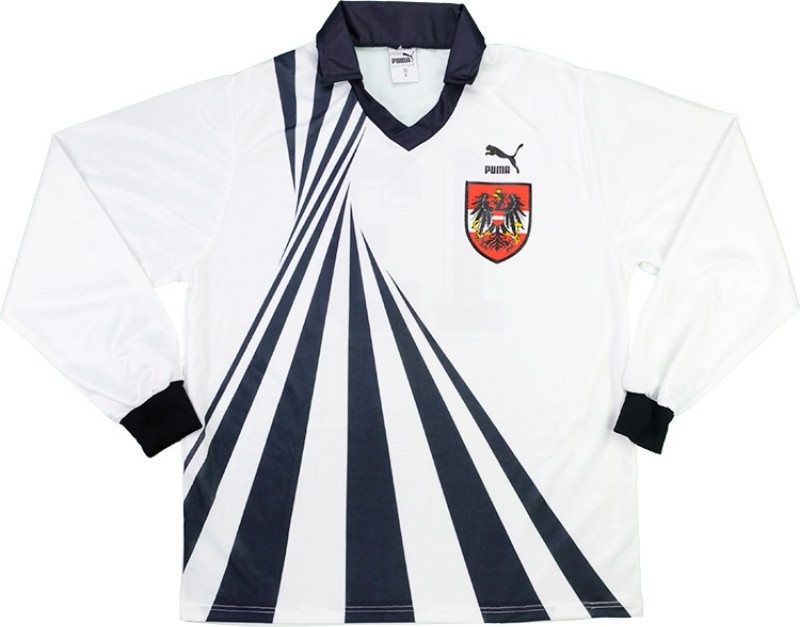
To combat brands taking advantage of undue exploitable marketing opportunities, FIFA laid down a marker for all sportswear brands to follow regarding the positioning and the brand elements they could display on the strips they produce for countries in 1990. PUMA reduced the size of their logo and first incorporated the name together with the cat silhouette.
adidas, who up to that point used only the trefoil logo on the kits, added an adidas wordmark beneath the trefoil. Italian brand Lotto also made an appearance on the global stage by producing the kits of Costa Rica, and added their sporty-inspired logo with the brand name in a horizontal manner.
1991
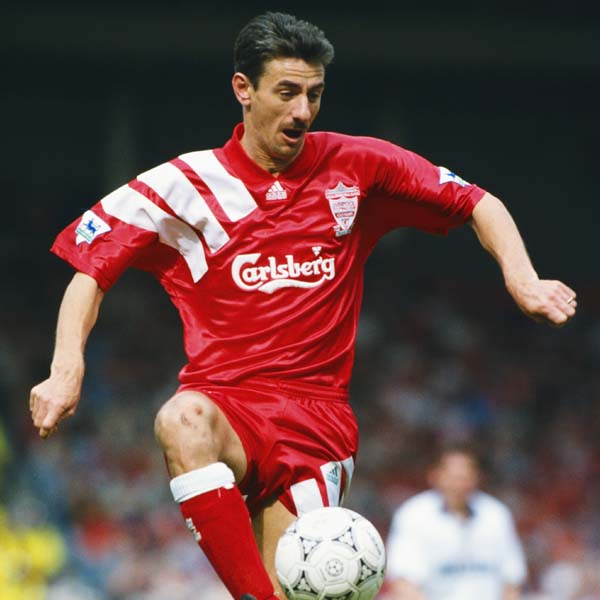
This year signaled the era where brands started producing generic creative designs for all football clubs and countries they produced kits for.
adidas went further to experiment with more creative concepts, and debuted the very first “Equipment” kit. This new concept came with a new mountain logo that featured the brand name with an Equipment inscription beneath it. To make their brand bolder on the kits, it usually came with an enlarged stripe on the shoulders. Liverpool FC and Marseille were the first to wear them. The Equipment kit became a precursor to most of the kits won by teams at the EURO Championships and Africa Cup of Nations in 1992.
1992
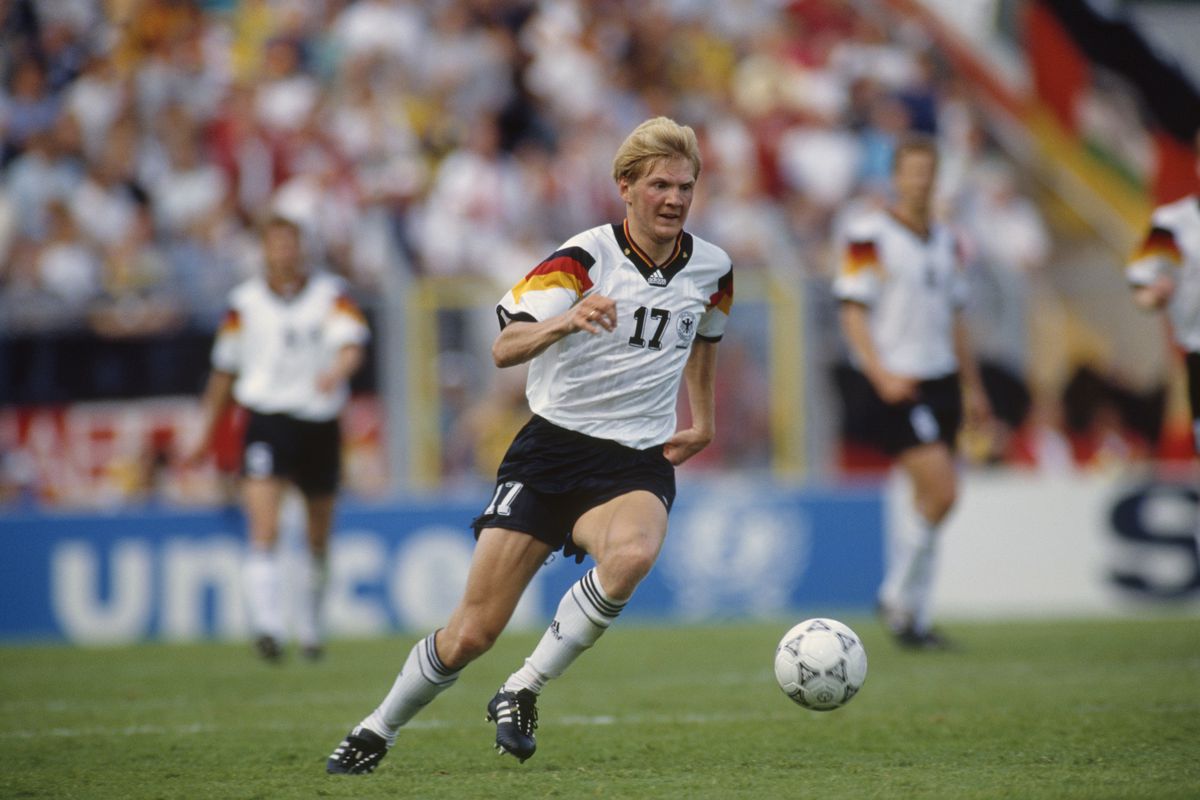
adidas’ sleeve spread designs continued to develop further, as France wore the double version of the sleeve stripes for the 1992 EUROs. Other countries like Ghana, Zambia, and even Germany all had copy designs of this kit.
1994
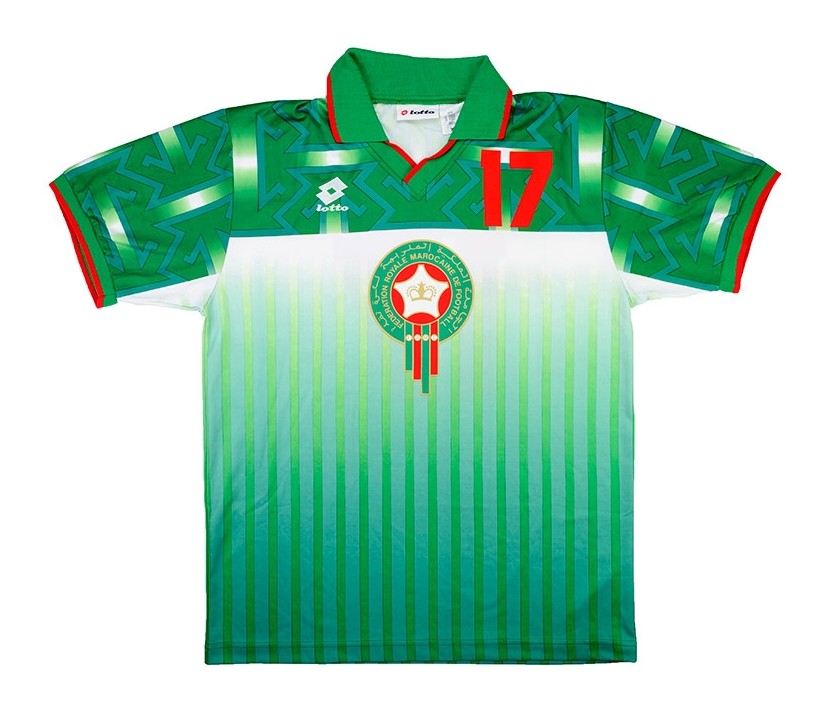
Lotto, who used to have its logo and name horizontally on shirts, changed its brand placement by having the logo and the brand name stacked like their competing brands.
Umbro took out the diamond logo and kept only its brand name on the shirt as worn by eventual winners of the 1994 World Cup, Brazil.
adidas were still playing around with the mountain logo and EQT range of design, and in 1994 it released a new capsule with the mountain-inspired Three Stripes logo on the ribs of the shirt, which was first debuted by the teams that wore its kits at the World Cup.
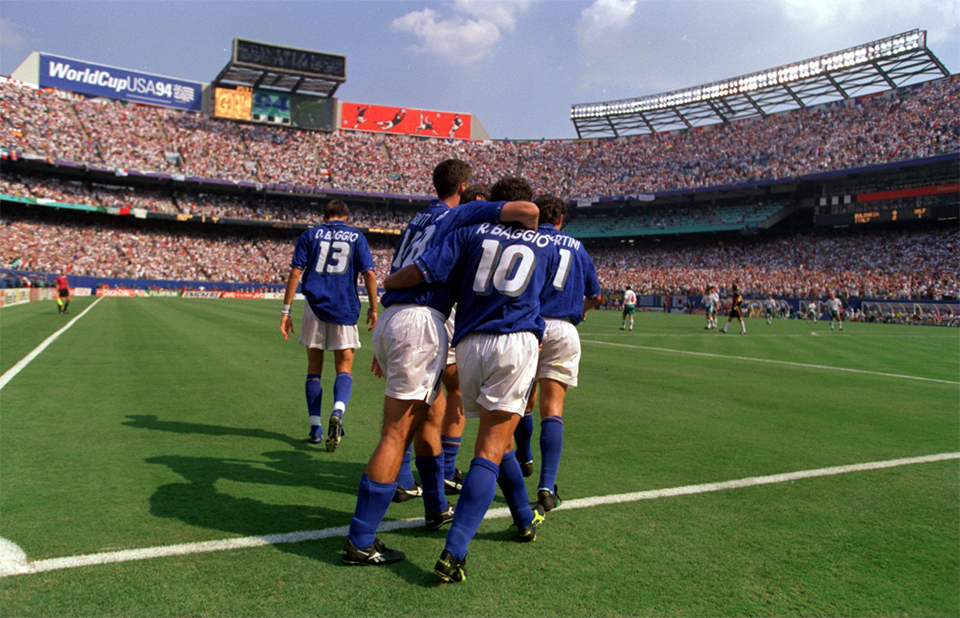
Also for the first time in 1994, FIFA took a leaf from the books of the NBA and allowed player names to be written at the back of kits, a move which has become widely popular and accepted in football today.
1995
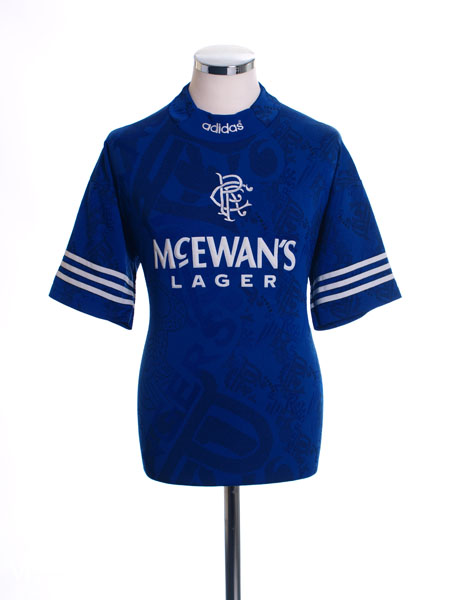
Regulations on kit designs and style by football’s governing body came into force, and adidas had to curtail its overt branding as a result. The more subtle approach gave way to a Three-Stripe design going around the sleeves and the base of the shorts, as seen on the 1995 Rangers FC kit.
1996
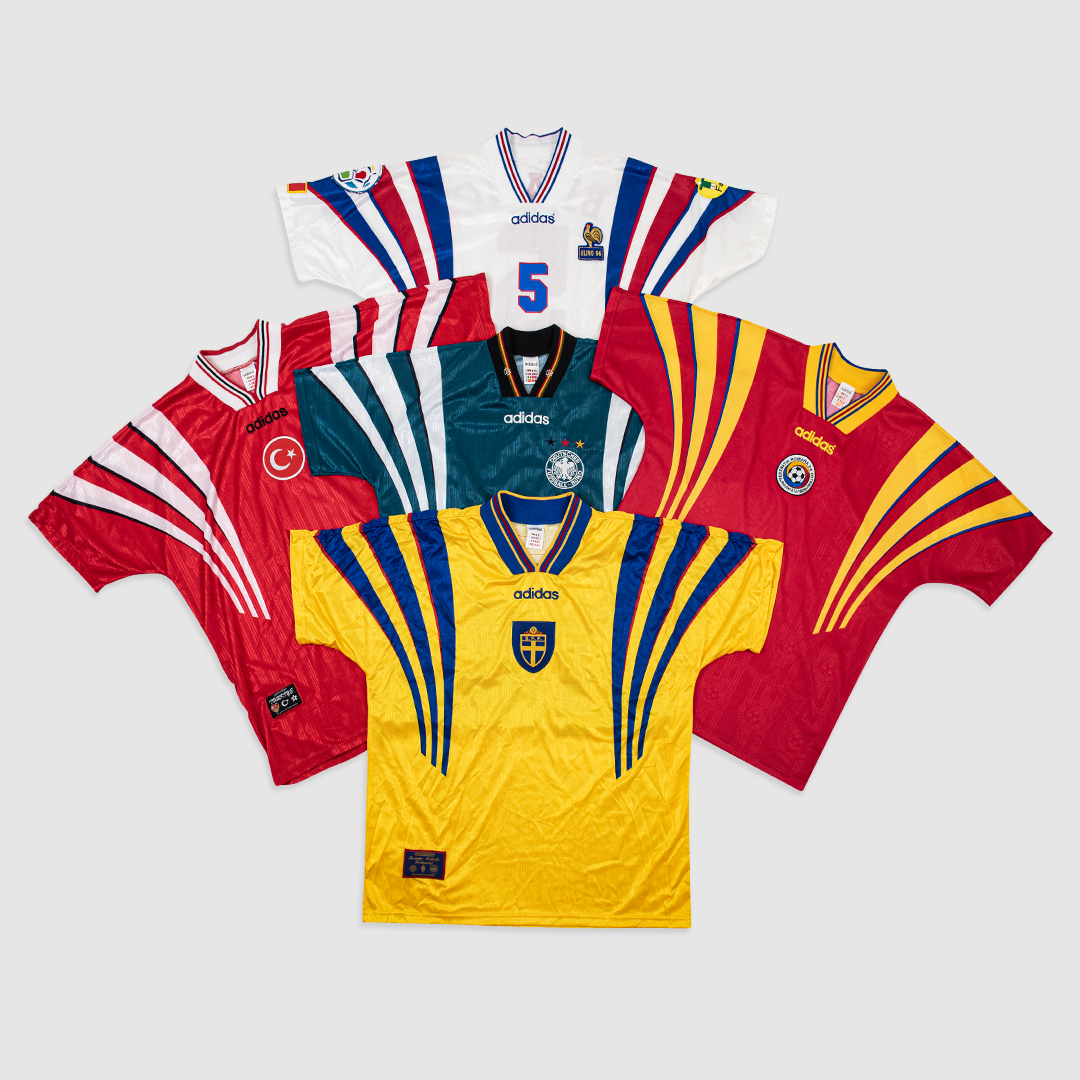
Most brands maintained their logo and brand placement for the most part in the ’90s, but adidas continued to experiment. At the 1996 EUROs and AFCON, it dropped three new brand embellishments on their jerseys.
Ghana and a few other African countries debuted the classic “Three Wings” capsule before other countries in Europe also showcased theirs.
Spain and Germany received special kits for the EUROs. Spain’s had three vertical lines flowing from one side of the shoulder to the base of the shirt, while the Three-Striped designs on Germany’s kit were on the shoulders to the cuff — an element that would strongly inform the adidas kit designs in the coming years.
Meanwhile that same year, Newcastle United in the English Premier League, also had a bespoke design from adidas with the three stripes running horizontally on the chest.
1998
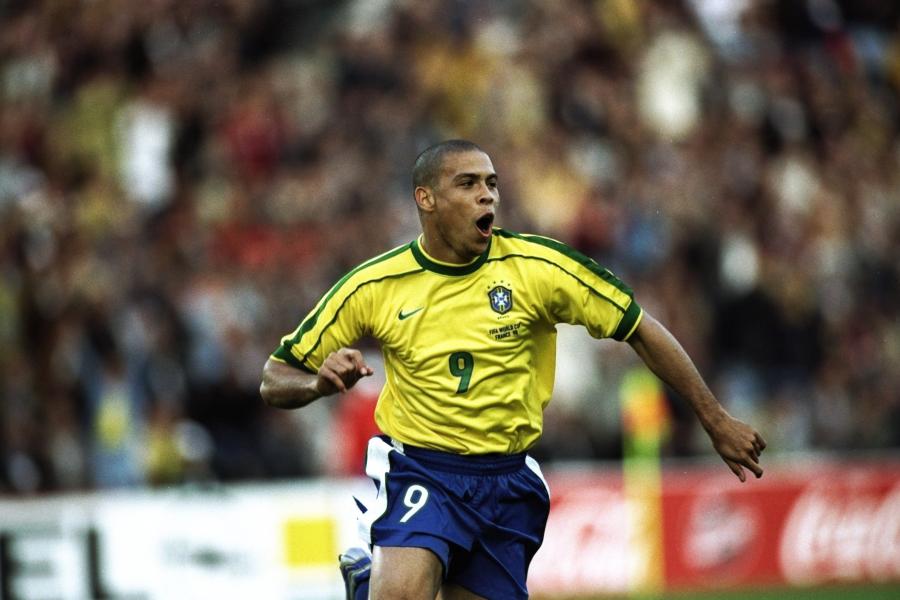
Nike makes a grand entrance on the international football scene with a Swoosh logo on the famous Brazil kit.
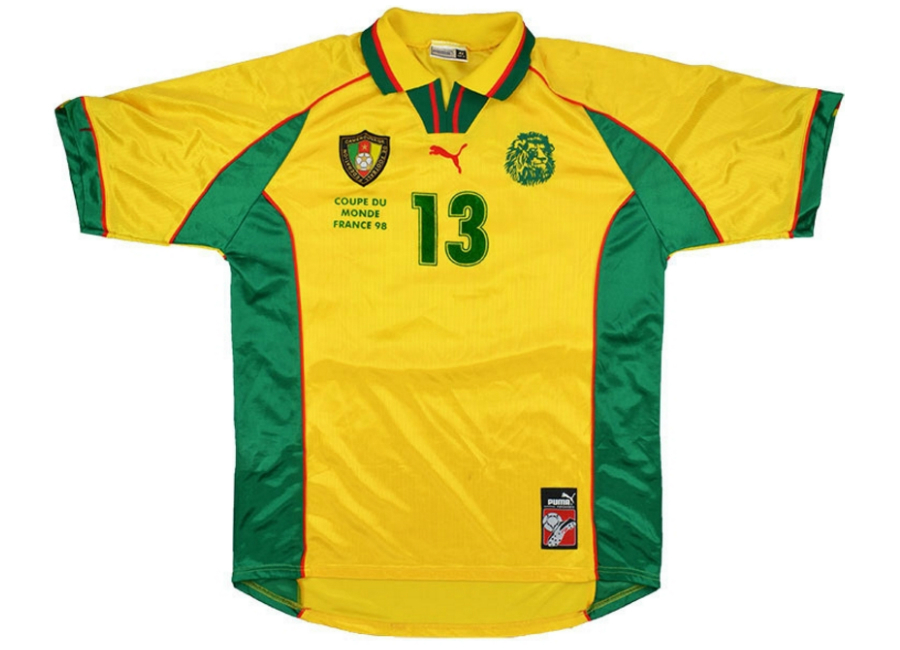
PUMA, who had also been absent from producing kits for teams at major international tournaments, made another appearance at the 1998 FIFA World Cup with its logo placed in the middle of shirts. This time, the brand dropped the PUMA wordmark and only had the cat logo featured.
2000
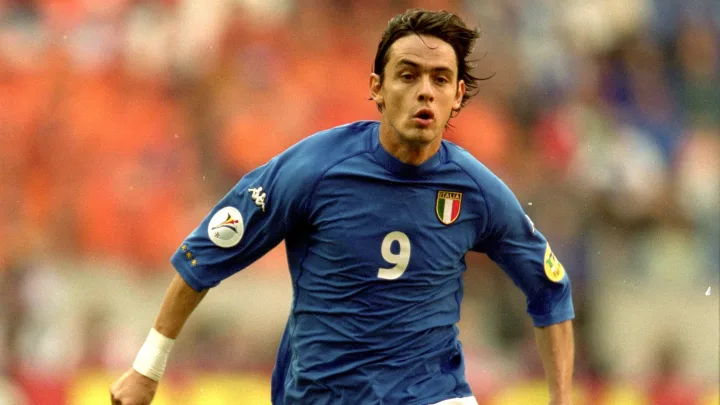
The Nike Swoosh appears on the shirts of Portugal and the Netherlands for the first time, and it’s a relationship that is still active to date. adidas effectively adopts the mountain logo with the brand name beneath it going forward.
Italian brand Kappa started a new trend of displaying their logos on the sleeves with the Italian national team kit at EURO 2000.
2002
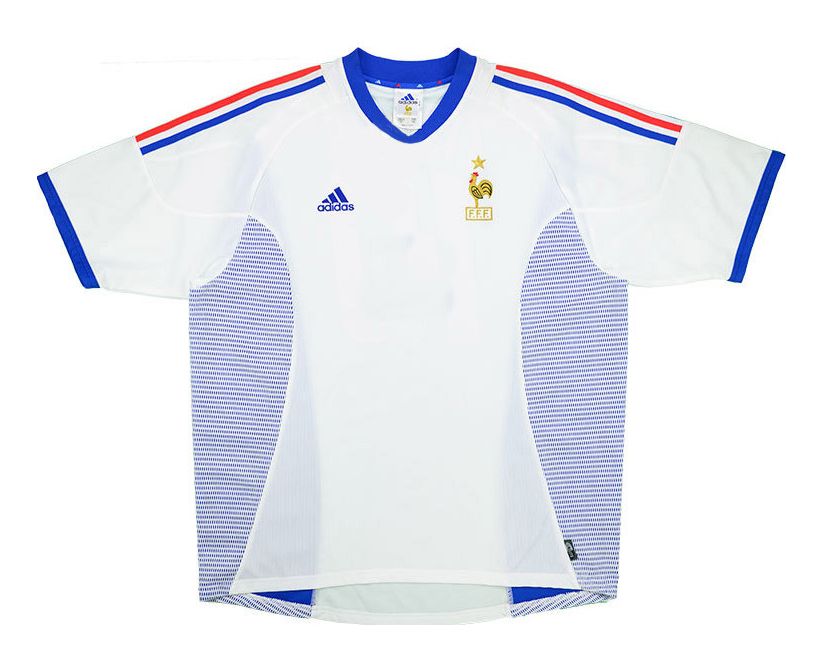
adidas embarked on a remarkable journey during the 2002 World Cup, where it envisioned a remarkable collection of Predators, crafted an extraordinary Fevernova ball, and revamped its kit designs to embrace the new millennium.
In a departure from tradition, the Three Stripes, which have always adorned the entire arm, have transformed. They now cease halfway down the sleeve, and instead of fabric, they are fashioned from the same plastic material used by sponsors on kits.
2004
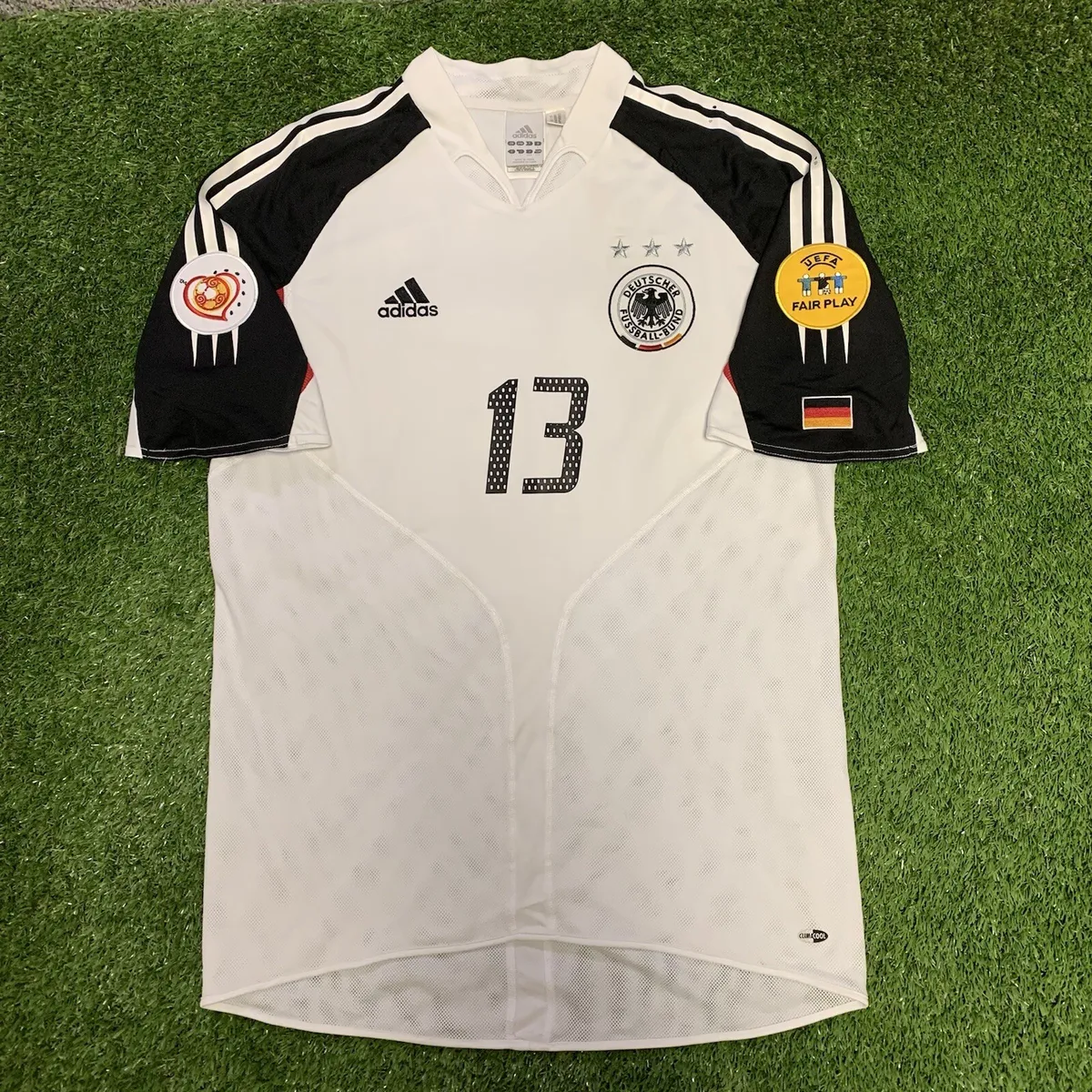
After taking a fresh approach to rebrand its kit outlook concerning the stripes for the 2002 FIFA World Cup, two years later, adidas decided to make them more pointed. Teams like France, Spain, and Germany all received shirts with this updated design for EURO 2004. These shirts were built upon the 2002 template, creating a modern and futuristic look, with the stripes on the sleeves being shorter, sharper, and pointed at the edges.
2010
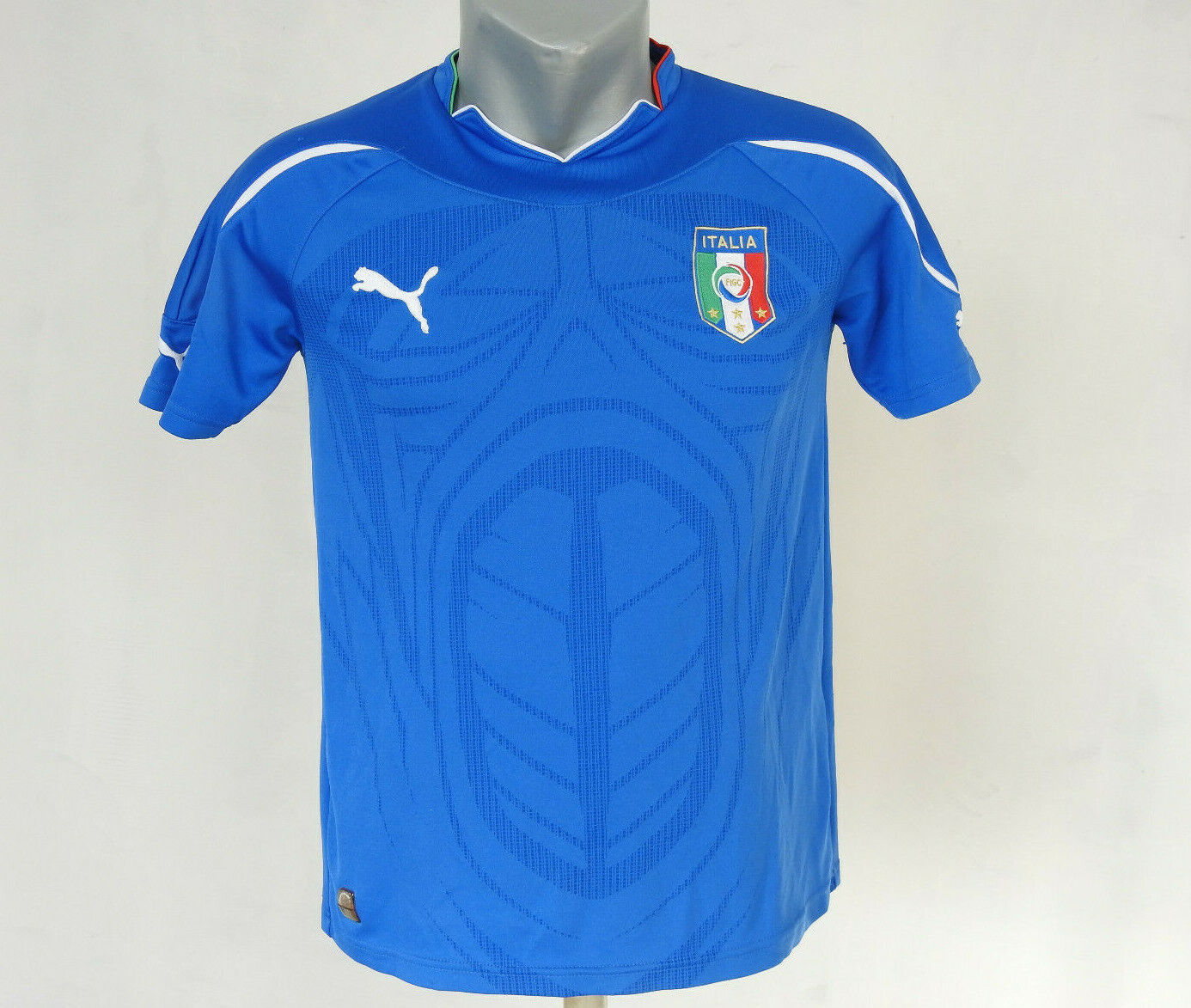
PUMA decided to add more of its brand logos on the sleeves of kits in addition to the one that is usually placed on the chest.

In other developments, UEFA added a regulation to prevent logos extending the entire stretch of the sleeves to allow room for competition logos and patches. As such, adidas creatively went around the stipulation by leaving gaps on the sleeves to accommodate the competition logos and tags.
2016
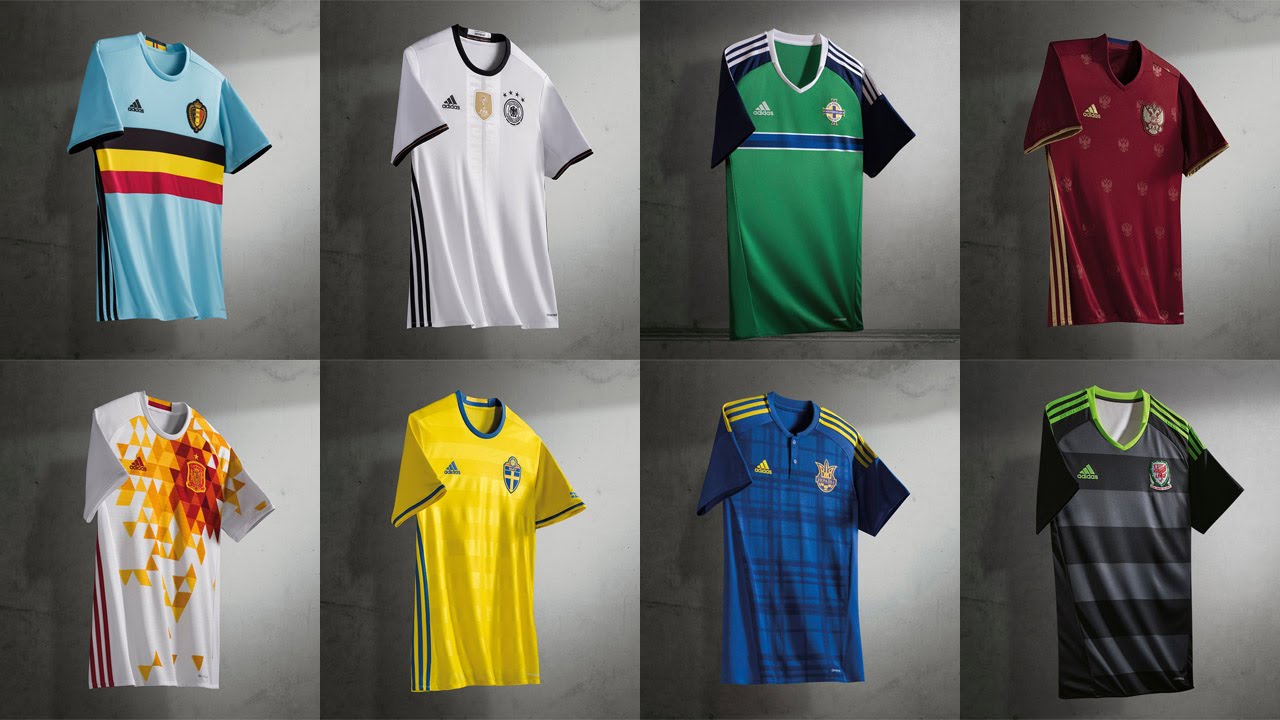
adidas further tweaked its brand elements on clubs and national teams that wore their shirts in 2016. Some of the kits they produced had shorter stripes, only featuring on the shoulders and not the sleeves.
The other iteration on kits had the Three Stripes effectively removed from the sleeves and vertically placed on the ribs flowing from the armpit to the hem.
2018
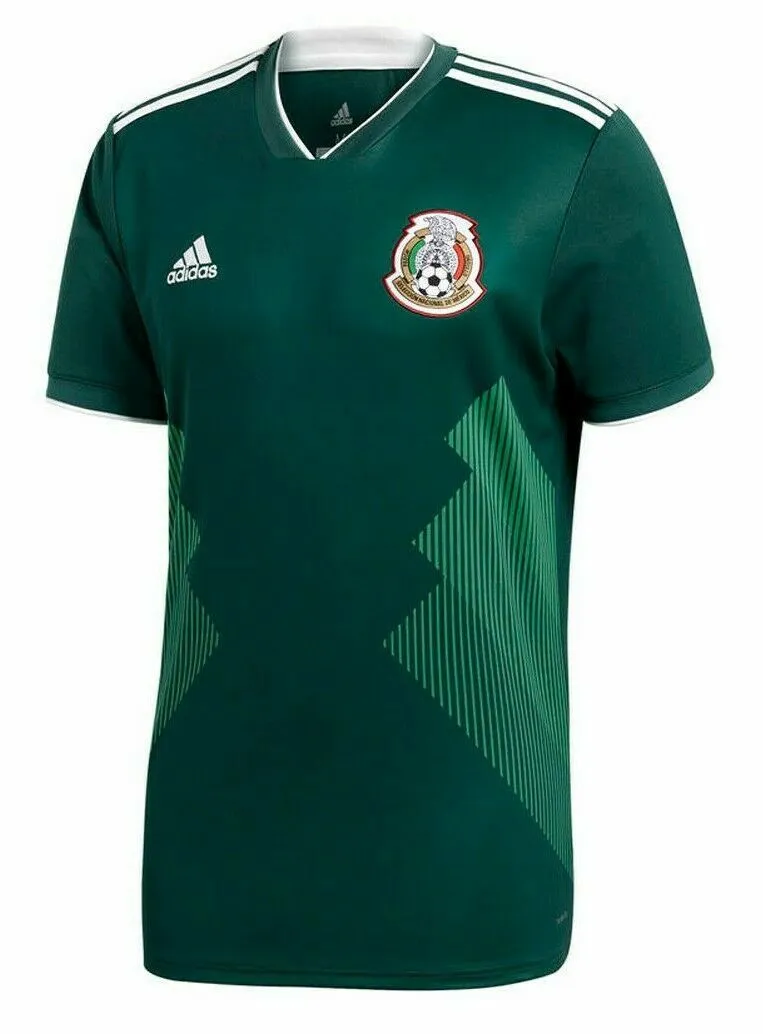
adidas went full retro at the 2018 World Cup by reproducing kits for clubs and national teams in some of its classic templates, but in a rather modern fashion. Spain’s kit had the vertical lines like it had in the mid-’90s, while Mexico’s kit also had the EQT mountain logo somewhat subtly placed on the sides of the kit.
2019
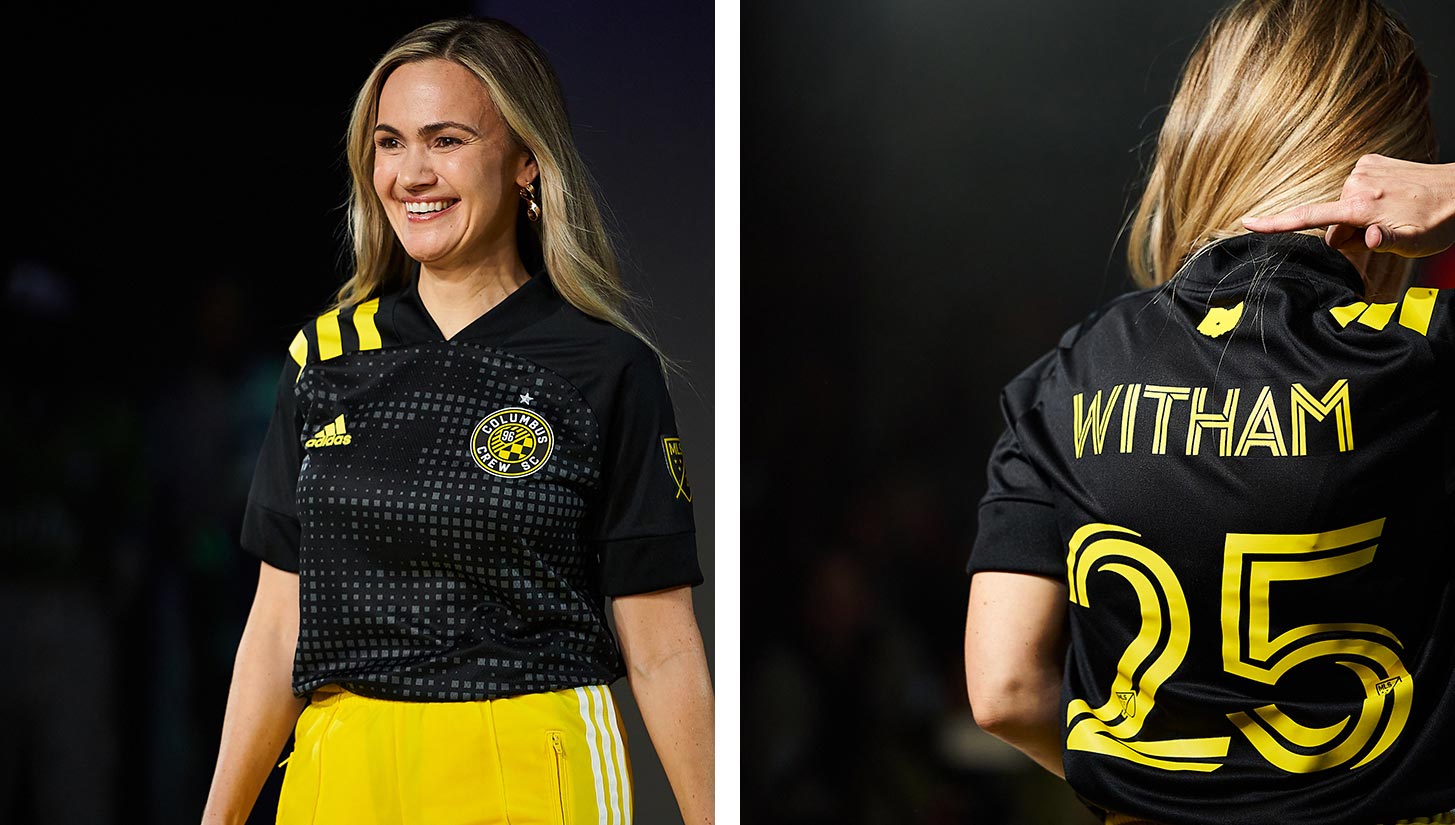
The retro train of adidas appeared in MLS, where it reintroduced the generic EQT mountain logo on the shoulders of the kits it produced for all MLS clubs.
2020

PUMA goes very audacious in design by taking off club and national team logos and replacing them with the names of the teams with the brand logo above it.
In a separate development, The International Olympic Committee asked that brands kitting teams in Olympic football tournaments only have one of its logos or embellishments on shirts. This forced adidas to remove the Three Stripes on the shoulders of some of its teams.
2022
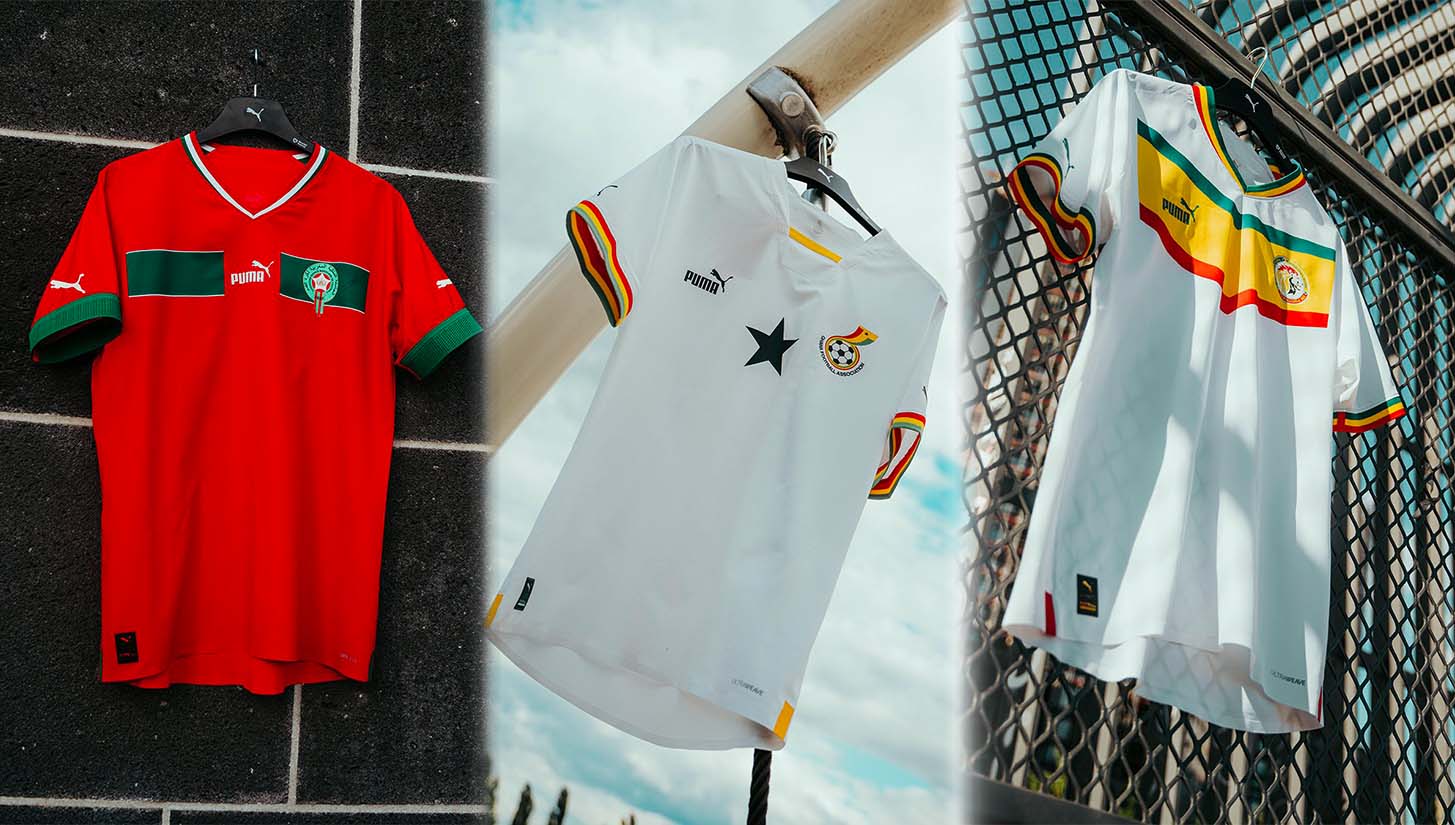
PUMA brought back its retro logo on kits used by teams at the 2022 World Cup in Qatar. Now, rumors of the adidas trefoil logo coming back have spread. In a world of constant innovation, sometimes brands realize that they had it right before.




